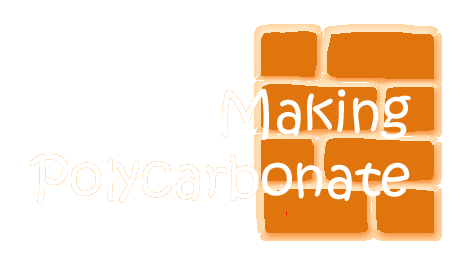

We're going to make polycarbonates on this page. Before we do that, let's take a look at our cast of characters. Our two leading molecules are bisphenol A, and phosgene. You can see them below in the regular way we draw molecules or see them in 3-D further below.
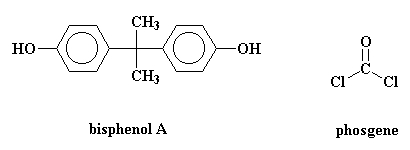
The model on the left below is an image of the BPA pdb model you can view by clicking here or you can just click on the image itself. The second image is of the diacid chloride monomer phosgene. Either way, be sure to close the new windows that open up with the 3D model in it when you are ready to come back here.
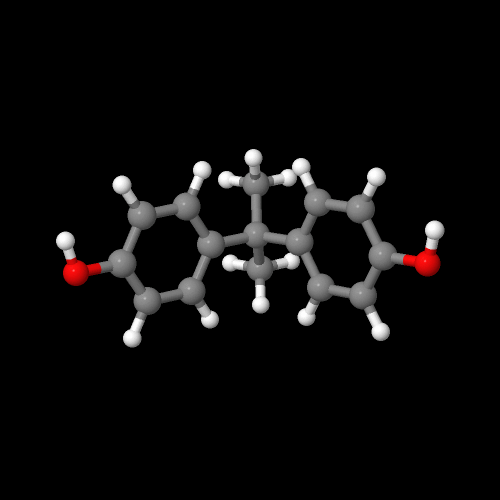

We're only going to worry about the bisphenol A right now. We'll get to the phosgene later. The first step in making a polycarbonate is treating the bisphenol A with NaOH. The hydroxyl group is going to do what bases do, and swipe a proton away from the bisphenol A. When this happens the hydroxyl group becomes a water molecule, and the bisphenol A, an alcohol, will find itself in the form of its sodium salt. Then the same reaction happens again on the other alcohol group of bisphenol A.
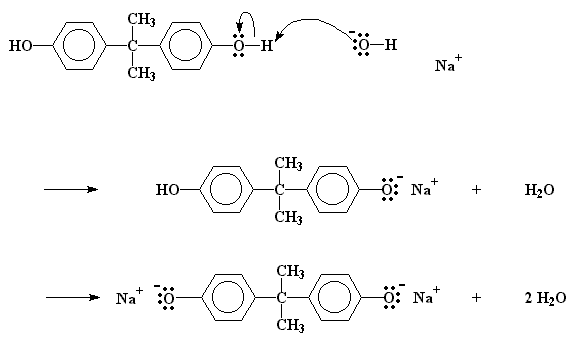
Click here to see a movie of this step of the reaction.
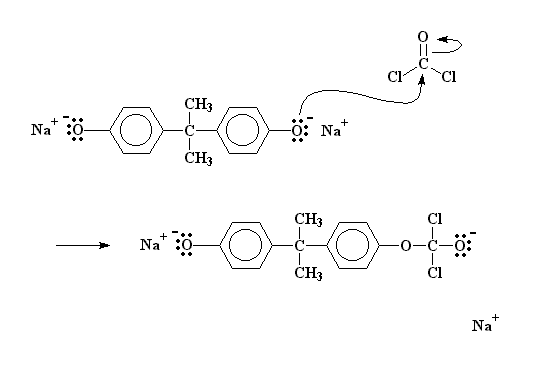
But don't assume it would like to stay this way. Far from it. The electrons on that oxygen will shift back down to the carbon, reforming the carbon-oxygen double bond. Of course, we know that the carbon can't share ten electrons, so it has to get rid of two. The two electrons to get the boot are the pair the carbon has been sharing with one of the chlorine atoms. So the chlorine and its electrons get kicked out of the molecule. The molecule we're left with is called a chloroformate. As for the chloride ion that got kicked out, it will team up with that sodium ion that's been hanging around quietly during all the commotion, to form NaCl.
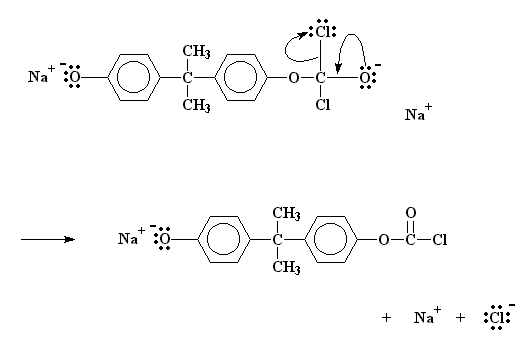
Click here to see a movie of this step of the reaction.

And it goes through a similar intermediate, and a similar game of electron musical chairs, to get the carbonate containing species shown.
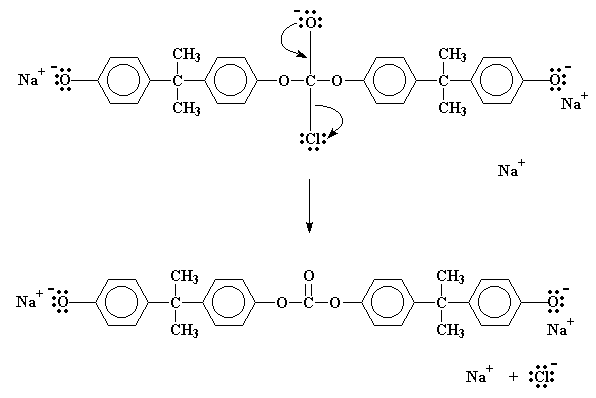
Click here to see a movie of this step of the reaction.
After this happens, the salt groups on the big new molecule can form react with more phosgene, and in this way, the molecule grows, until we get the polycarbonate.

If you want to see a movie of the whole process, click here.

|
Return to Polycarbonates Page |

|
Return to Level Four Directory |

|
Return to Macrogalleria Directory |
